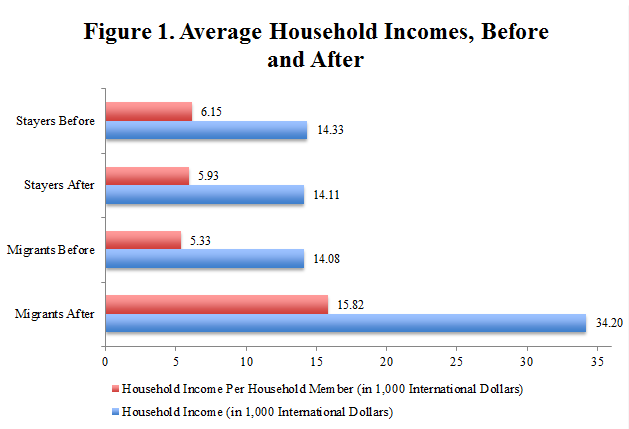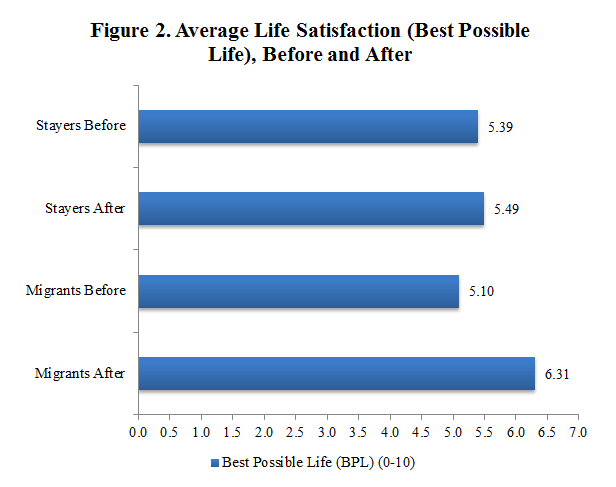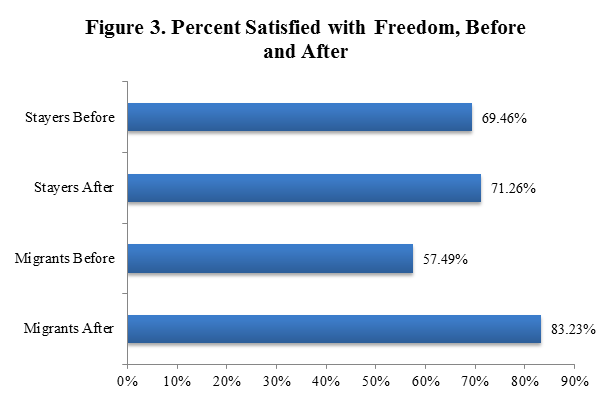The recent economic crisis and subsequent lagging economic recovery have renewed the immigration debate in the United States and beyond. However, while the effect of migration on the well-being of native populations is important, so is the question of how migrants fare once they reach their destination countries.
Citizens of destination economies often argue that there are potential costs of migration for them, ranging from increasing strains on welfare systems to threats to the jobs of natives to the difficulties of assimilation. Despite these fears, on balance, migration’s benefits for the these destination economies outweigh the costs: Immigrants are net contributors to public coffers, and complementarities between low-skilled immigrants and natives exist—particularly when new migrants take low-skilled jobs that native workers eschew.
But what about the welfare of the migrants themselves once they have reached their new homes? This is an important issue, largely due to the sheer magnitude of migration stocks: About 232 million people lived outside their country of birth in 2013.
Most migrants move across international borders to maximize their earnings and to gain opportunities, and most do make significant income gains. Whether these earnings gains are mirrored by improvements in reported well-being and broader quality of life is still largely an open question, however.
Higher levels of immigrant well-being can be instrumentally important for social outcomes such as public health and productivity, as happier individuals are typically more productive and healthier. Immigrant dissatisfaction may reflect social exclusion and a lack of assimilation, and even extremist attitudes among natives, all of which can result in social unrest and lower economic output. From the point of view of the home countries, emigrant well-being is important as migrants send remittances and contribute to the well-being of their home countries through investments, the spread of ideas and technology.
Understanding the well-being consequences of migrating is challenging, as comparing the well-being of migrants with that of those who stayed behind in the sending countries or with natives in the destination countries is methodologically flawed. Such comparisons may simply reflect the traits of those who choose to migrate, and who may have differences in ability, risk tolerance, aspirations and motivation, among other traits. The direction of causality between well-being and migration is also unclear: While migration may influence well-being, well-being might well influence migration. A recent paper using South American data finds that respondents who intend to migrate in the next year are wealthier and more educated than the average respondent in the region, but are also less happy and more critical of their current and future economic opportunities.
Despite the large income gains typically associated with migration, the move can also be accompanied by declining happiness because of adaptation to new income levels at the same time that aspirations are rising. While migrants’ (absolute) incomes increase (see Figure 1), so do their expectations as they compare themselves to the high-earning natives in their host countries. In a recent paper, we use Gallup World Poll data and statistical techniques to understand the consequences of migration for the well-being (income and non-income dimensions) of movers from transition economies to advanced nations. Like other studies, we find unequivocal income increases due to migration. More importantly, we find that there are significant gains in life satisfaction (Figure 2) and in perceptions of freedom (Figure 3).

Source: Nikolova and Graham, (2014) based on Gallup World Poll Data.

Source: Nikolova and Graham, (2014) based on Gallup World Poll Data.

Source: Nikolova and Graham, (2014) based on Gallup World Poll Data.
We studied migrants from transition and post-transition societies as these are the predominant sources of migration for the OECD countries in Europe. For example, in 2012, Poland and Romania were among the top three migrant sources of OECD migrants. It is important to note that the migration experience of those who leave the transition economies and go to Europe, which is culturally very similar, is likely quite different from that of movers Asia, Africa and Latin America, for example.
We find that migrants from transition countries achieve a better quality of life after they go abroad. The average household income premium from migration for our sample is about 21,000 international dollars (about 10,500 ID per household member). And even if reference norms and aspirations change, migrants’ life satisfaction improves. The average benefit is substantively and statistically significant: an increase of about 1.0-1.2 (on a life satisfaction scale 0-10). Perhaps most importantly, migration positively affects perceptions of freedom (based on a question which asks whether or not respondents are satisfied with their freedom to choose in life), with migrants from the most recent European Union enlargements being nearly 40 percent more satisfied. Data from around the world show that freedom to make choices in life is a pivotal element of human well-being.
At a time when there is ample reason to be concerned about the state of world affairs, our research findings are a “happy story:” By voting with their feet, migrants from transition economies can improve their well-being. Surely migration does not solve the problems in the countries the migrants left, nor can we be confident at this stage that our results apply to migrants from other parts of the world or those going to destinations outside the OECD. Yet it does suggest that win-win outcomes are possible from increasing mobility in global labor markets. That is a story worth learning more about.
The Brookings Institution is committed to quality, independence, and impact.
We are supported by a diverse array of funders. In line with our values and policies, each Brookings publication represents the sole views of its author(s).



Commentary
Does Moving Across International Borders Boost Migrants’ Incomes, Happiness and Freedom Satisfaction?
October 17, 2014